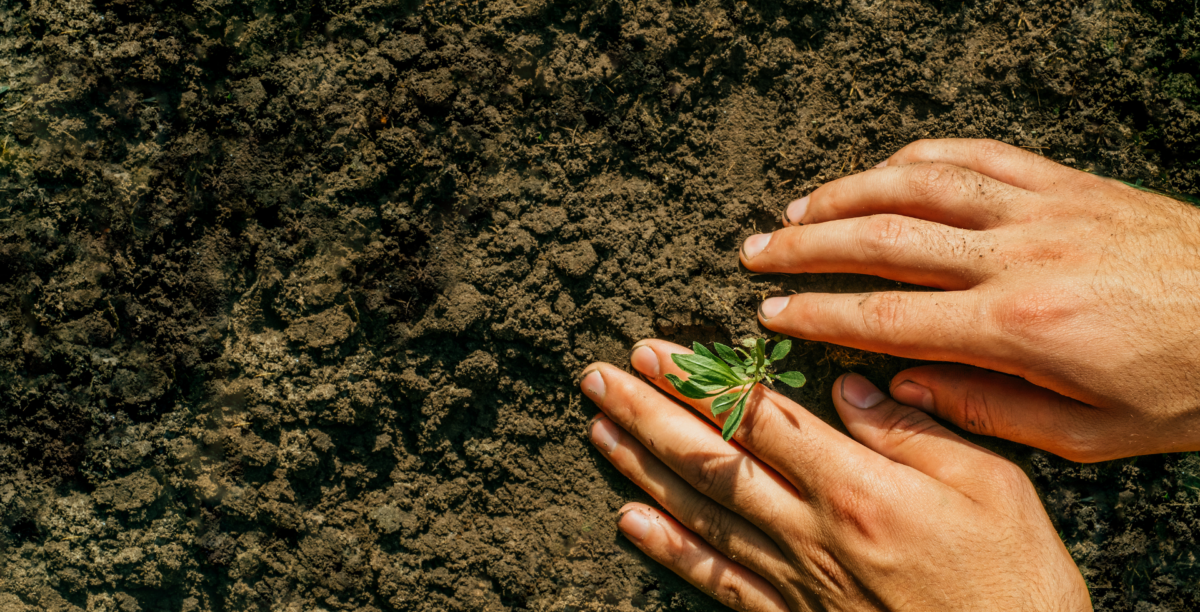Share
Follow #LookDownToo across social media to learn about the importance of regenerative agriculture and healthy soils.
Soil is the skin of our planet. This thin layer of living material holds roots, water and nutrients, as well as a myriad of organisms and organic matter. To truly see the biodiversity it holds, one must look down; below the surface of the soil.
The Food and Agriculture Organisation (FAO) estimates that 1/3 of our world’s soil is degraded, meaning it's less able to grow crops. Instead of absorbing carbon, it emits it into the atmosphere. Yet, a World Resources Institute report shows global food demand is set to rise as much as 50 per cent by 2050.
Businesses can support farmers in their supply chain to transition to regenerative agriculture. This can restore soil health, reduce pollution, help meet global demand and capture carbon.

Healthy soil is teeming with biodiversity. It absorbs water and carbon dioxide, and provides us with the conditions to grow quality food.
About 24 billion tonnes of fertile land is lost each year, while just a centimetre of soil can take many years to grow. Regenerative agriculture practices can help mitigate this.
The United Nations estimates by 2030, global soil carbon sequestration can potentially mitigate around five gigatonnes of carbon per year.
French farmer Charles Lecornet summarises how he is protecting the environment while also maintaining a productive farm through regenerative agriculture.
Aditya Jyani from India explains what living soil means to him, how he practices organic farming and the challenges he faces on his farm.

Click on the images to learn more
Earthworm Foundation CEO Bastien Sachet explains our approach to improving soil health. Our aim by 2025 is to be working on one million hectares of land that is moving towards regenerative agriculture.

Looking at making regenerative agriculture the norm? Want your supply chain low carbon and soil friendly?
Businesses can help tackle climate change and capture carbon if they regenerate the health of soil.
By valuing soil health, businesses can help secure long-term agricultural supplies and contribute to food security.
By benchmarking soil health and identifying farmers’ needs, businesses can incentivise change, collaborating with others in sourcing landscapes.

Nestlé France’s Head of Sustainable Sourcing, Béatrice Marie-Le-Gall
In this video, Béatrice talks about how Nestlé is committed to sourcing raw materials from regenerative agriculture and improve the health of soil in its supply chain.
Mariana Contreras, Grupo Bimbo's Global Director of Sustainable Sourcing
In this podcast, Mariana talks about how Grupo Bimbo has begun to implement regenerative agriculture practices within its supply chain.
Earthworm Foundation and its partners are working to bring health back to soil around the world. Click on the map to learn more about some of these projects:
To learn more about our work in soils across different regions, view our 2022 soils report here.

Looking for support to better define your corporate sustainability targets and how to achieve them?
Earthworm Foundation's Living Soils initiative
Living Soils (Sols Vivants) is an initiative driven at the landscape level with the objective to improve soil fertility in partnership with farmers and other actors on the territory. Fertile soil plays a critical role in bringing crops everything they need for their development and for better crop productivity - while contributing to the water cycle and biodiversity of the land. Soils also act as carbon sinks, sequestering CO2 from the atmosphere and thus helping regulate our climate.
